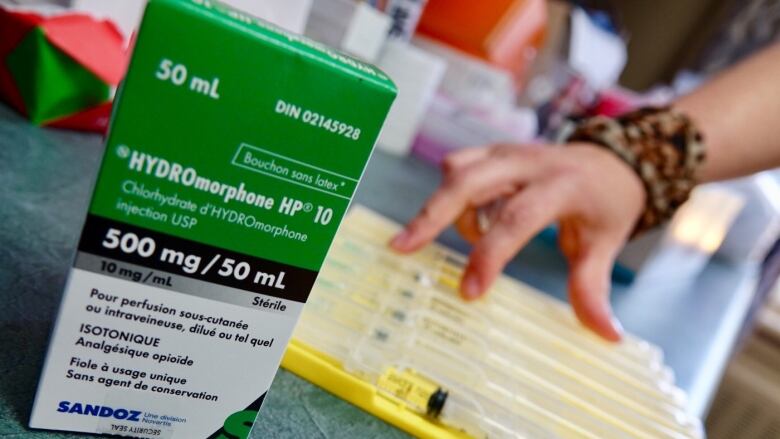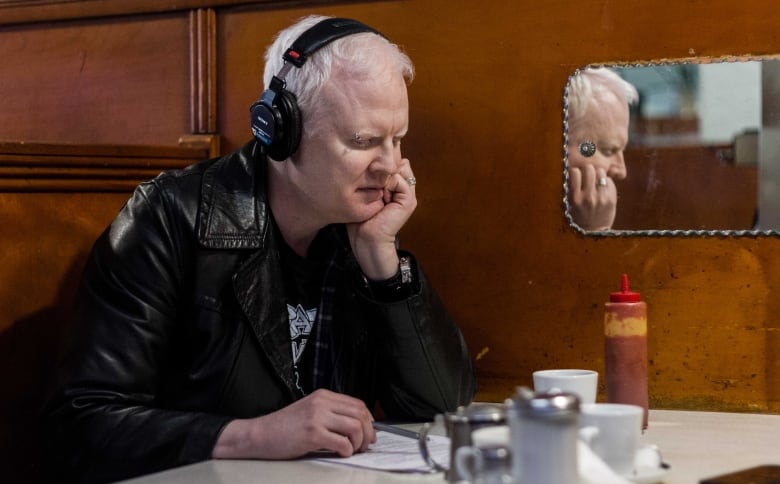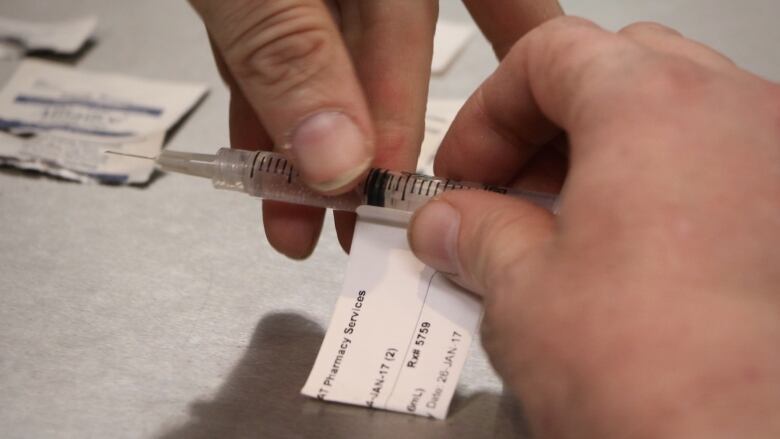Safe drug supply program still not reaching enough people in B.C., say advocates
The province says 3,329 people are now receiving hydromorphone as a safer alternative to toxic street drugs

It's been a year since the province rushed to create new guidelines allowing doctors to prescribe hydromorphone to patients with opioid use disorders, as a way to give them an alternative to toxic illicit drugs.
The change came as the COVID-19 pandemic began to take a significant toll in the province. Combined with theoverdose crisis dating back to 2016, health officials had two major public health emergencieson their hands.
But now, as overdose deaths continue to rise, killing more than five people in the province each day according to the latest BC Coroners Service update, many are identifying shortfalls in the so called 'safe supply' program technically called the Risk Mitigation Guidance that kicked off last March.
"This opioid epidemic has really been, I would say, one of the worst public health disasters in the history of our country," said Vancouver Mayor Kennedy Stewart on Thursday. "It's nowhere near where it needs to be."
Stewart shares the same concerns about the current safe supply programas some activists in the drug user community, physicians and addiction experts:
- Not enough people living with opioid use disorder are accessing safe, prescribed alternatives to street drugs.
- Not enough doctors are prescribing to patients.
- The medications available to prescribe are no longer strong enough to compete with illicit drugs.
According to Ministerof Mental Health and Addictions Sheila Malcolmson, the number of people receiving hydromorphoneas an alternative to toxic street drugs has increased from 677 to 3,329 in the past year.
'Death is all around us'
For Garth Mullins, a Vancouver drug user activist and host of the podcast Crackdown, that number of people isn't anywhere close to enough.
"The program has really stalled," he said. "I know lots and lots of people who have been denied access to this program way more than I know people who have successfully got on it."
The ministry estimates that 77,000 British Columbianshave been diagnosed with opioid use disorders, and 23,000 people are now receiving some form of opioid assisted treatment like methadone or suboxone. With the people now receiving hydromorphone, that leaves roughly 50,000 people without treatment.

Many British Columbians have lost friends and familyto the overdose crisis. Last year alone,1,716 people were killed.
Mullinsis someone who has been at the centre of the horror. His phone is full of contacts who have died.
"Death is all around us," he said this week in reaction to the latest coroner's update.
Mullinsechoes Stewart's points about doctors being reluctant toprescribeoptions for drug usersand the concern that hydromorphone simply isn't strong enough for many people who use drugs.
Increasing illicit drug potency
Highly potent and unpredictable streetdrugs, including complicated mixtures containing sedatingbenzodiazapines, are beingnoticed by physicians specializing in addiction.
"A year out [from the launch of the new guidelines], we've realized that we haven't been able to compete with the toxic illicit drug supply," said Dr. Rupi Brar, the interim medical director of the addiction program at Vancouver Coastal Health.
"What we need is fentanyl and heroin that's what we need so people can come to a clinic and get their dose in a safe way," said Brar.
Physician training
She said there are pockets of well-trained physicians, like herself, who are comfortable prescribing safe alternatives to street drugs, especially in the Vancouver Coastal Health region and on Vancouver Island.

But, according to Brar, many others simply don't have the education required, and they balk at prescribing doses of hydromorphone that are far bigger than anything they were ever taught to prescribe.
For Stewart, Brar and Mullins, an obvious next step in drug policy would be decriminalization, but they saythere's also plenty to be done to enhance the safe supply program.
According toCheyenne Johnson, interim executive director at the B.C. Centre for Substance Use, a new set of guidelines is being created. She expects that to be announced in May, saying officials are looking at different substances, as well as different ways drugs are consumed.
"We do need to meet drug users where they're at and provide them with the types of medications that match the types of tolerance they have from using street drugs," said Johnson.
Do you have more to add to this story? Email rafferty.baker@cbc.ca
Follow Rafferty Baker on Twitter: @raffertybaker












_(720p).jpg)


 OFFICIAL HD MUSIC VIDEO.jpg)
.jpg)



























































































